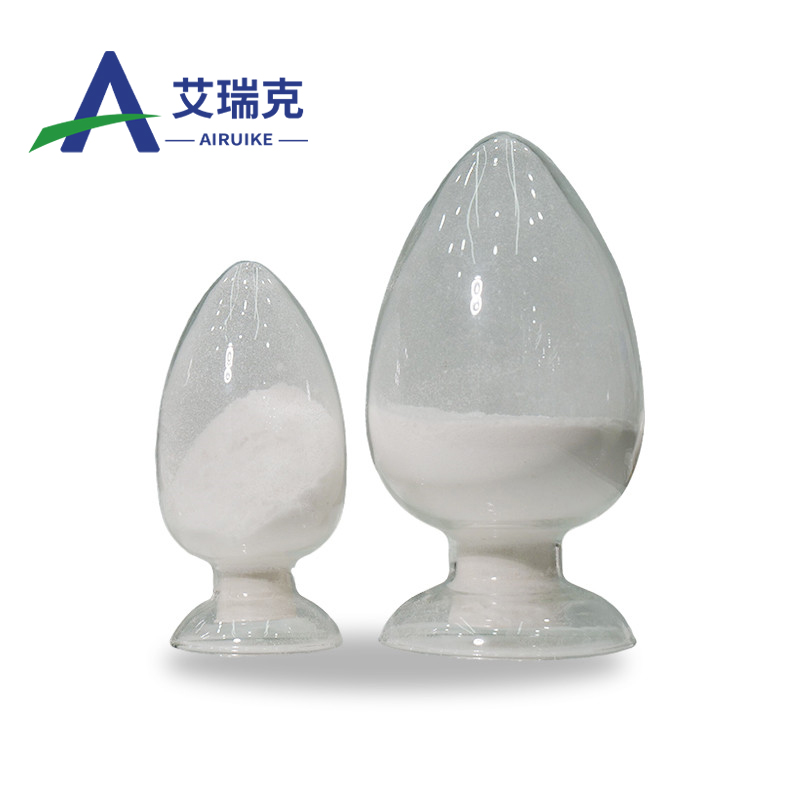-
Categories
-
Pharmaceutical Intermediates
-
Active Pharmaceutical Ingredients
-
Food Additives
- Industrial Coatings
- Agrochemicals
- Dyes and Pigments
- Surfactant
- Flavors and Fragrances
- Chemical Reagents
- Catalyst and Auxiliary
- Natural Products
- Inorganic Chemistry
-
Organic Chemistry
-
Biochemical Engineering
- Analytical Chemistry
-
Cosmetic Ingredient
- Water Treatment Chemical
-
Pharmaceutical Intermediates
Promotion
ECHEMI Mall
Wholesale
Weekly Price
Exhibition
News
-
Trade Service
Hepatolenticular degeneration (HLD; OMIM 277900), also known as Wilson's disease (Wilson's disease), is an autosomal recessive disorder of copper metabolism.
The pathogenic gene ATP7B encodes a copper transporter P Type ATPase, the pathogenic variant of this gene leads to the functional defect or loss of ATPase, resulting in biliary copper excretion disorder.
A large amount of copper accumulates in the liver, brain, kidney, bone, joint, cornea and other tissues and organs.
The patient has liver damage, Neuropsychiatric manifestations, kidney damage, osteoarthropathy and corneal pigment ring (Kayser-Fleischer ring, K-F ring) and other manifestations.
Since Wilson disease patients are easily misdiagnosed or missed clinically, in order to better guide clinicians in the diagnosis and treatment of Wilson disease patients, domestic experts in the field have improved and revised the Wilson disease diagnosis and treatment guidelines for reference.
Clinical manifestations Wilson disease patients can start at any age, but it is more common between the ages of 5 and 35.
There are also patients with cirrhosis at the age of 3 or patients with symptoms only at the age of 80.
About 3%-4% of patients are older than 40 years of age.
Neuropsychiatric manifestations: Neuropsychiatric symptoms are more common in patients with onset at the age of 10-30.
The main manifestations are: (1) dystonia; (2) tremor; (3) limb stiffness and slow movement; (4) abnormal mental behavior; (5) Other rare neurological symptoms.
Multiple neuropsychiatric symptoms often appear at the same time, and the severity of each symptom may be different.
Neuropsychiatric symptoms often occur later than liver symptoms, so they are easily misdiagnosed as hepatic encephalopathy.
Liver damage: Liver damage is more common in infants and children.
Most patients onset at the age of 10 to 13 and present the following liver damage manifestations, such as acute hepatitis, fulminant liver failure, chronic liver disease or cirrhosis (compensated or degeneration) Compensation) and so on.Damage to other systems: The accumulation of copper ions in other systems also shows corresponding dysfunction or damage, such as kidney damage, osteoarthropathy, myocardial damage, and myopathy.
Young female patients may have menstrual disorders, infertility, and recurrent miscarriages.
Pre-symptomatic individuals: Pre-symptomatic individuals generally refer to the following three conditions: routine physical examination found mildly elevated transaminase but asymptomatic and confirmed by ATP7B gene screening; accidentally found corneal K-F ring but asymptomatic and confirmed by ATP7B gene screening; Wilson disease The asymptomatic siblings of the proband were diagnosed by ATP7B gene screening.
Diagnostic criteria For patients with unexplained liver disease manifestations, neurological symptoms (especially extrapyramidal symptoms) or psychiatric symptoms, the possibility of Wilson's disease should be considered.
The age of onset cannot be used as a basis for the diagnosis or exclusion of Wilson disease.
The diagnosis points are recommended as follows: ➤Nerve and/or psychiatric symptoms.
➤Unexplained liver damage.
➤Decreased serum ceruloplasmin and/or increased 24h urinary copper (level I recommendation, level B evidence).
➤Cornea K-F ring is positive (level I recommendation, level B evidence).
➤Family co-segregation and pathogenicity analysis of gene variants confirmed that both chromosomes of the patient carried ATP7B gene pathogenic variants (level I recommendation, level B evidence).
Wilson's disease can be diagnosed when it meets (1 or 2) + (3 and 4) or (1 or 2) + 5; when it meets 3+4 or 5 but has no obvious clinical symptoms, it is diagnosed as a presymptomatic individual of Wilson disease; Any 2 of the 3 items are diagnosed as "probably Wilson disease", and further follow-up observation is required.
It is recommended that ATP7B gene testing be performed to confirm the diagnosis.
Differential diagnosis The clinical manifestations of Wilson disease patients are complex and diverse, which can involve various systems and are first diagnosed in different departments.
Clinically, they should be differentiated from other related diseases, such as fulminant hepatitis, chronic liver disease and cirrhosis, Parkinson's disease or Parkinson's syndrome Symptoms, dystonia of various causes, chorea, essential tremor, mental disorders caused by other causes, epilepsy, nephritis or nephrotic syndrome, thrombocytopenic purpura, hemolytic anemia, rheumatoid arthritis, osteoarthropathy Wait.Recommendations for treatment points: ➤ Once the patient is diagnosed, a lifelong low-copper diet is required (level I recommendation, level B evidence).
➤D‑penicillamine is the most commonly used copper excretion drug, but it is important to pay attention to its adverse reactions, especially in patients with severe dysarthria, limb spasticity, stiffness or deformation, try not to use D‑penicillamine (level I recommendation, level B evidence ).
➤For patients who cannot tolerate D‑penicillamine treatment, consider intravenous infusion of sodium dimercaptopropanesulfonate or oral dimercaptosuccinic acid capsules (level I recommendation, level B evidence).
➤Pre-symptomatic individuals recommend zinc therapy alone, supplemented with a low-copper diet, and regular follow-up examinations (level I recommendation, level B evidence).
➤Patients after liver transplantation still need to adhere to a low-copper diet.
Liver transplantation is not recommended for patients with severe neurological or psychiatric symptoms (level I recommendation, level B evidence).
➤Patients can marry and have normal marriage and childbirth after treatment and the symptoms are stable, but copper excretion drugs are not recommended during pregnancy and breastfeeding (level I recommendation, level C evidence).
Prognosis Wilson disease is usually disabling or fatal without treatment.
The patient's fatality rate is about 5.
0% to 6.
1%.
The main cause of death is severe liver disease or severe neurological symptoms.
A small number of patients commit suicide due to disease burden or depression.
However, Wilson's disease is one of the few treatable neurogenetic diseases.
After long-term standard copper drainage treatment or liver transplantation, the life span of Wilson's disease patients can be greatly extended.
Especially in the early stage of the disease and intervention before neurological symptoms appear, most patients can return to normal work and life.
Yimaitong is compiled from: Neurogenetics Group of Neurology Branch of Chinese Medical Association.
Guidelines for Diagnosis and Treatment of Hepatolenticular Degeneration in China 2021[J].
Chinese Journal of Neurology,2021,54(4):310-319.
The pathogenic gene ATP7B encodes a copper transporter P Type ATPase, the pathogenic variant of this gene leads to the functional defect or loss of ATPase, resulting in biliary copper excretion disorder.
A large amount of copper accumulates in the liver, brain, kidney, bone, joint, cornea and other tissues and organs.
The patient has liver damage, Neuropsychiatric manifestations, kidney damage, osteoarthropathy and corneal pigment ring (Kayser-Fleischer ring, K-F ring) and other manifestations.
Since Wilson disease patients are easily misdiagnosed or missed clinically, in order to better guide clinicians in the diagnosis and treatment of Wilson disease patients, domestic experts in the field have improved and revised the Wilson disease diagnosis and treatment guidelines for reference.
Clinical manifestations Wilson disease patients can start at any age, but it is more common between the ages of 5 and 35.
There are also patients with cirrhosis at the age of 3 or patients with symptoms only at the age of 80.
About 3%-4% of patients are older than 40 years of age.
Neuropsychiatric manifestations: Neuropsychiatric symptoms are more common in patients with onset at the age of 10-30.
The main manifestations are: (1) dystonia; (2) tremor; (3) limb stiffness and slow movement; (4) abnormal mental behavior; (5) Other rare neurological symptoms.
Multiple neuropsychiatric symptoms often appear at the same time, and the severity of each symptom may be different.
Neuropsychiatric symptoms often occur later than liver symptoms, so they are easily misdiagnosed as hepatic encephalopathy.
Liver damage: Liver damage is more common in infants and children.
Most patients onset at the age of 10 to 13 and present the following liver damage manifestations, such as acute hepatitis, fulminant liver failure, chronic liver disease or cirrhosis (compensated or degeneration) Compensation) and so on.Damage to other systems: The accumulation of copper ions in other systems also shows corresponding dysfunction or damage, such as kidney damage, osteoarthropathy, myocardial damage, and myopathy.
Young female patients may have menstrual disorders, infertility, and recurrent miscarriages.
Pre-symptomatic individuals: Pre-symptomatic individuals generally refer to the following three conditions: routine physical examination found mildly elevated transaminase but asymptomatic and confirmed by ATP7B gene screening; accidentally found corneal K-F ring but asymptomatic and confirmed by ATP7B gene screening; Wilson disease The asymptomatic siblings of the proband were diagnosed by ATP7B gene screening.
Diagnostic criteria For patients with unexplained liver disease manifestations, neurological symptoms (especially extrapyramidal symptoms) or psychiatric symptoms, the possibility of Wilson's disease should be considered.
The age of onset cannot be used as a basis for the diagnosis or exclusion of Wilson disease.
The diagnosis points are recommended as follows: ➤Nerve and/or psychiatric symptoms.
➤Unexplained liver damage.
➤Decreased serum ceruloplasmin and/or increased 24h urinary copper (level I recommendation, level B evidence).
➤Cornea K-F ring is positive (level I recommendation, level B evidence).
➤Family co-segregation and pathogenicity analysis of gene variants confirmed that both chromosomes of the patient carried ATP7B gene pathogenic variants (level I recommendation, level B evidence).
Wilson's disease can be diagnosed when it meets (1 or 2) + (3 and 4) or (1 or 2) + 5; when it meets 3+4 or 5 but has no obvious clinical symptoms, it is diagnosed as a presymptomatic individual of Wilson disease; Any 2 of the 3 items are diagnosed as "probably Wilson disease", and further follow-up observation is required.
It is recommended that ATP7B gene testing be performed to confirm the diagnosis.
Differential diagnosis The clinical manifestations of Wilson disease patients are complex and diverse, which can involve various systems and are first diagnosed in different departments.
Clinically, they should be differentiated from other related diseases, such as fulminant hepatitis, chronic liver disease and cirrhosis, Parkinson's disease or Parkinson's syndrome Symptoms, dystonia of various causes, chorea, essential tremor, mental disorders caused by other causes, epilepsy, nephritis or nephrotic syndrome, thrombocytopenic purpura, hemolytic anemia, rheumatoid arthritis, osteoarthropathy Wait.Recommendations for treatment points: ➤ Once the patient is diagnosed, a lifelong low-copper diet is required (level I recommendation, level B evidence).
➤D‑penicillamine is the most commonly used copper excretion drug, but it is important to pay attention to its adverse reactions, especially in patients with severe dysarthria, limb spasticity, stiffness or deformation, try not to use D‑penicillamine (level I recommendation, level B evidence ).
➤For patients who cannot tolerate D‑penicillamine treatment, consider intravenous infusion of sodium dimercaptopropanesulfonate or oral dimercaptosuccinic acid capsules (level I recommendation, level B evidence).
➤Pre-symptomatic individuals recommend zinc therapy alone, supplemented with a low-copper diet, and regular follow-up examinations (level I recommendation, level B evidence).
➤Patients after liver transplantation still need to adhere to a low-copper diet.
Liver transplantation is not recommended for patients with severe neurological or psychiatric symptoms (level I recommendation, level B evidence).
➤Patients can marry and have normal marriage and childbirth after treatment and the symptoms are stable, but copper excretion drugs are not recommended during pregnancy and breastfeeding (level I recommendation, level C evidence).
Prognosis Wilson disease is usually disabling or fatal without treatment.
The patient's fatality rate is about 5.
0% to 6.
1%.
The main cause of death is severe liver disease or severe neurological symptoms.
A small number of patients commit suicide due to disease burden or depression.
However, Wilson's disease is one of the few treatable neurogenetic diseases.
After long-term standard copper drainage treatment or liver transplantation, the life span of Wilson's disease patients can be greatly extended.
Especially in the early stage of the disease and intervention before neurological symptoms appear, most patients can return to normal work and life.
Yimaitong is compiled from: Neurogenetics Group of Neurology Branch of Chinese Medical Association.
Guidelines for Diagnosis and Treatment of Hepatolenticular Degeneration in China 2021[J].
Chinese Journal of Neurology,2021,54(4):310-319.







